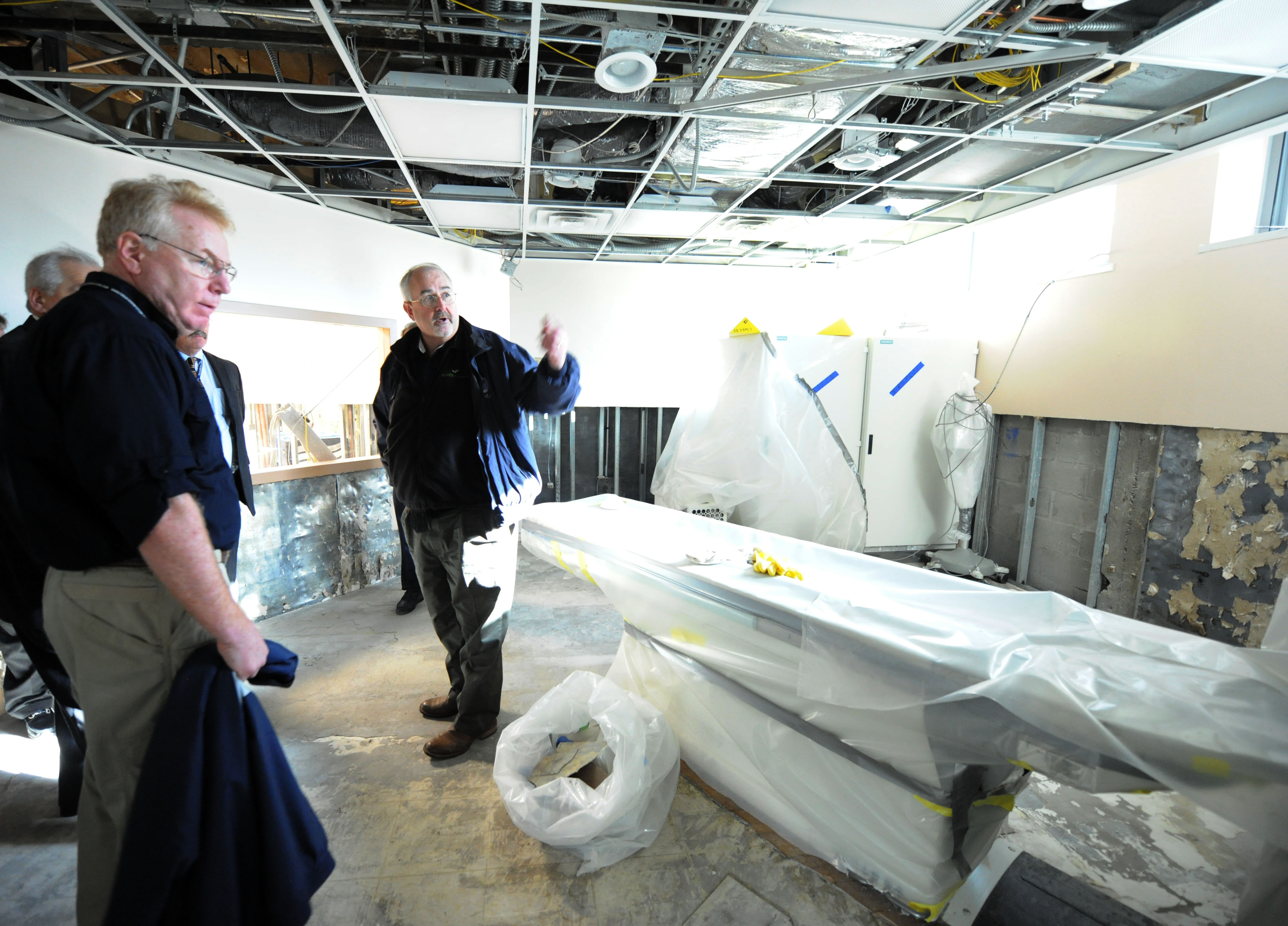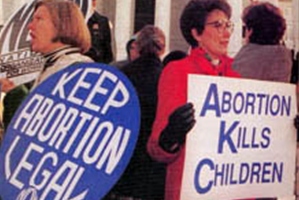CHMP’s Envision Health: Film & New Media co-sponsors The LGBT Film Series at Hunter College April 15, 20, 26th
CHMP's Envision Health: Film and New Media
CHMP's Envision Health: Film and New Media
Any typing I do between working the
CHMP Senior Fellow Charmaine Ruddock, MS directs Bronx Health REACH, a coalition of 50 community and faith-based organizations, funded by the Centers for Disease Control’s REACH 2010 Initiative to address racial and ethnic health disparities.
So now, the Bronx, in addition to having the designation as the poorest urban congressional district in the United States (approximately, 40% of residents live below the federal poverty level), has the additional, unfortunate, designation of being the hungriest neighborhood in the country.
Here is the irony; we also have one of the highest rates of obesity. For children – 1 out of 3 in the borough’s Head Start program is obese, and nearly 4 in 10 in public elementary schools are overweight or obese. For adults – 1 in 4 adults is obese, and 2 in 3 are overweight or obese.
The other irony is that the Hunts Point Terminal Produce Market, which is the second largest wholesale market in the world, supplying 60 percent of the city’s fresh produce, is located in the Bronx. But little of this gets to the hungriest Bronx residents, especially those in the South Bronx.
This seeming paradox of being the hungriest as well as the most overweight and obese actually reflects two sides of the same problem. Poor people with very limited resources also have access to the worst nutritional quality of food. What they can afford limits their food choices to those that are calorie dense but nutritionally poor. However, this represents a potential market for the cheap food industry, thus it should come as no surprise that there has been a large influx of fast food restaurants in the Bronx. And, if you read The Extraordinary Science of Addictive Junk Food in the New York Times Magazine you were made even further aware of the enormous odds that the poor and hungry face in trying to feed themselves and their families.
Tucked inside the pediatric clinic at Nassau University Medical Center (NUMC) in East Meadow, NY, is the help desk of Health Leads, a new program staffed by enthusiastic and committed students from Hofstra University.
These young advocates fill “prescriptions” for food, utilities, transportation, and other services for local families in need.
The program addresses non-medical needs of families that may affect their health and wellness, such as living environments, access to nutritious food, or child care. Clinicians learn about these needs through questionnaires that patients fill out at each visit. They then “prescribe” items like food, or electricity to run home health equipment just as they would prescribe an inhaler for asthma or antibiotic for an infection.
This is a first-of -its-kind program in Nassau County and could serve as a care model for other large suburban locales.
With support from a professional case manager, trained students connect families with appropriate resources and help them with applications, navigate red tape, and ensure needs are actually met. The students essentially act as case workers, helping families determine what services they are eligible for and how to traverse the often-confusing process of applying for aid or special programs.
Podcast: Play in new window | Download
May May Leung, PhD, RD is an
Jim Stubenrauch is a senior fellow at
Senior Fellow Nancy Cabelus, DNP, MSN, RN, is an international forensic nurse consultant currently working with Physicians for Human Rights on a program addressing sexual violence in conflict zones in central and east Africa.
In recent weeks I returned to Kenya to continue my work with Physicians for Human Rights, Program on Sexual Violence in Conflict Zones. In Kisumu, Kenya our team held a training workshop for 30 professionals on the cross-sectoral response to addressing the needs of survivors following sexual violence. Participants not only told us how greatly they appreciated the training but how important it was for them to meet and collaborate with colleagues from within their own community. It was an unusual opportunity that nurses and doctors would be invited to sit in the same training session as police officers, lawyers and magistrates. However, all sectors must learn to work together to properly investigate cases of sexual violence. A critical outcome of the workshop was that the participants all committed to holding follow-up meetings to continue collaborating on this newly formed network with a nurse taking the lead as the group coordinator.
Following the workshop, I returned to Nairobi where I had the pleasure of meeting Yeon Yoo, a registered nurse and trauma counselor from Seoul, Korea who has been working extensively with HIV infected women through an NGO called Harvest Women Center. Ms. Yoo is the daughter of CHMP Visiting Scholar, Nahmee Choi. Months ago, I virtually introduced Yoo and Choi to my Kenyan friend and colleague, Irene Mageto who resides in Nairobi. Mrs. Mageto is a registered nurse, lecturer, and PhD student.
Joy Jacobson is a CHMP senior fellow. Follow her on Twitter: @joyjaco
After much controversy, the U.S. Senate finally approved a $50 billion Hurricane Sandy relief package on Monday, which President Obama signed on Tuesday night. It took nearly three months for Congress to endorse the aid—a delay that many residents of New York, New Jersey, and Connecticut, especially those most severely affected, found inexcusable.

At Coney Island Hospital in mid-December, imaging equipment damaged by the storm surge. Photo: Jocelyn Augustino, FEMA
My report on how four New York City hospitals damaged in the hurricane have fared in the weeks after—and how the city’s nurses have responded—appears in the February issue of the American Journal of Nursing. Bellevue Hospital, the Veterans Affairs Medical Center, NYU’s Langone Medical Center, and Coney Island Hospital all had to evacuate patients and remained closed or only partially reopened for many weeks.
The slow recovery has affected the lives of many patients and clinicians. Some say the recovery is taking too long. Mary Fitzgerald, a nurse at Montefiore Medical Center in the Bronx and a member of the New York State Nurses Association, participated in December in a protest at the home of Mayor Michael Bloomberg to demand a stronger response from the city. Fitzgerald told me:
In our great city, unfortunately, there was an inadequate disaster plan, and the entire hospital infrastructure was stressed. If people don’t evacuate, then what? If a storm can knock out all of this, what do we do? The city has got to be more transparent. We’re looking for stronger alliances.
WNYC’s Fred Mogul reported on Wednesday that Bellevue hospital still plans to offer full services this month. But the needed repairs to the 22-story facility have included, according to Mogul, damage to the vast electrical and heating systems, water pumps, and even elevators, at a cost in the hundreds of millions of dollars.
Back in the late 1970s I worked in an abortion clinic that was fire-bombed by an anti-choice zealot. I wasn’t scheduled to work that day. I arrived at the scene immediately after a co-worker telephoned me with the news.
Clinic staff stood together on the sidewalk watching the firefighters put out the blaze numb but determined we’d fight back. No one was killed. Staff acted swiftly to get everyone out of the building. Most of the injuries suffered were invisible.
We quickly moved clinic operations to a location about 30 miles away. This was inconvenient and disruptive to the staff and people we served. There was limited complaining and a lot of collective action to make this work. Women counted on us.
Since then there has been an organized campaign by anti-choice extremists resulting in physicians and clinic workers being murdered; more abortion clinics bombed, burned down, invaded, and blockaded; and patients persistently being harassed and intimidated.
Ever wonder how the people who work in abortion clinics in our country are dealing with the violence and threat of violence in their lives on a day-to-day basis?
 Where is corporate responsibility these days? I know it’s in the toilet, but I’m stunned by yet another example that is drastically affecting one state–North Dakota, where the prospects of hydrofracking and other oil exploration and production have dramatically increased the number of uninsured workers in the state.
Where is corporate responsibility these days? I know it’s in the toilet, but I’m stunned by yet another example that is drastically affecting one state–North Dakota, where the prospects of hydrofracking and other oil exploration and production have dramatically increased the number of uninsured workers in the state.
Today’s New York Times includes an article about the impact of this oil boom in North Dakota on its health care system. Transient oil workers do dangerous work that too often results in an emergency room visit. Indeed, journalist John Eligon reports that ER visits increased by 400% last year alone at McKenzie County Hospital.
Emergency rooms cannot turn people away, so hospitals have to absorb the cost of uninsured care with the hope that it will be relieved by public funds designated for uncompensated care. Eligon cites McKenzie County Hospital’s debt load as an example of the impact of uninsured care on the state’s health care system. That hospital’s debt has increased 2000% over the past four years.
 This is a guest post by Linda Kamateh who is a recent graduate of Syracuse University’s Newhouse Executive Master’s in Communications Management Program and a Senior Media Associate at NewYork-Presbyterian Hospital.
This is a guest post by Linda Kamateh who is a recent graduate of Syracuse University’s Newhouse Executive Master’s in Communications Management Program and a Senior Media Associate at NewYork-Presbyterian Hospital.
I just completed my graduate studies at Syracuse University’s Newhouse Executive Master’s in Communications Management Program. I’ve spent the last year reading lengthy research studies and interviewing health care public relations professionals for my capstone on this topic. From this extensive research, I’ve compiled a list of the Seven Must Haves to launch a social media health campaign.
Engagement with your audience is key and I discovered that while most of the communicators I spoke with use social media to post materials they are unclear or unable to use these mediums to engage with their audiences. The unique benefit of using social media outlets such as Twitter and Facebook is audience engagement.
Below are seven concepts that health care communicators should consider when developing social media campaigns or integrating social media into an existing mass media outreach effort to maximize engagement.
It’s been 40 years since the Supreme Court’s 7-2 decision affirmed the right of women to decide the issue of abortion for themselves. By invalidating restrictive state laws, the Court held that reproductive rights — at least during the first trimester of pregnancy — were a given under the Constitution. Wholesale bans and unreasonable restrictions on the procedure by states were in violation of the Fourteenth Amendment and a woman’s right to privacy.
The decision spawned a national debate about choice, government intrusion into personal lives, religion, ethics, and politics. It’s been a hot topic in every presidential race, many state and local contests, and has sharply divided this country into “pro-life” and “pro-choice” camps. The two movements are no closer to consensus in 2013 then they were in 1973.
 If anything, the vitriol has become more intense and ugly. Medical professionals have been shot. Clinics bombed. Threats, violence, and vandalism common among some extremists. A few months ago, then-Rep.Todd Aiken’s ridiculous remarks about rape and pregnancy set off a firestorm in the state of Missouri, the nation, and unintentionally helped several Democratic candidates in their respective races.
If anything, the vitriol has become more intense and ugly. Medical professionals have been shot. Clinics bombed. Threats, violence, and vandalism common among some extremists. A few months ago, then-Rep.Todd Aiken’s ridiculous remarks about rape and pregnancy set off a firestorm in the state of Missouri, the nation, and unintentionally helped several Democratic candidates in their respective races.
Many in the Republican party vow to pass legislation repealing Roe v Wade. The issue of [mostly] Republican, white males, who never have and of course never will become pregnant, telling women what they can or can’t do with their bodies might be humorous, if there wasn’t so much at stake. Unfortunately, some of them are doing a two-step around the law.
Texas recently defunded Planned Parenthood, making it extremely difficult, if not impossible for mostly poor, minority, and rural women to obtain any kind of health care – including well-women checkups and preventive screenings – let alone make a choice about pregnancy. Other states are following suit. The Guttmacher Institute developed a state-by-state breakdown of abortion laws and their major provisions. None seem as invasive as the new Virginia law requiring a vaginal ultrasound for every woman undergoing an abortion prior to the procedure. It may be the ultimate invasion of privacy.


